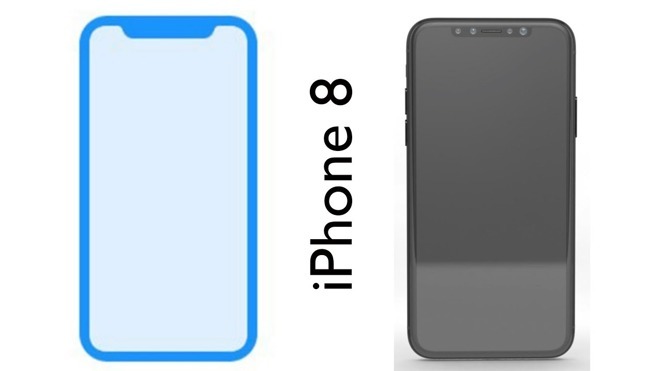Apple holds commanding lead over Qualcomm in 3D sensing tech development by nearly two years
A new analyst report claims that Apple holds up to a two year lead on rival Qualcomm, when it comes to software and hardware development of accurate 3D sensing systems — and no Android product developer seems that willing to host the technology in the foreseeable future.
According to a research note by KGI Securities analyst Ming-Chi Kuo, seen by AppleInsider, Qualcomm is the "most engaged" in developing 3D sensing systems for Android. However, Kuo doesn't see integrated systems shipping until 2019 because of immature algorithms, and "design and thermal issues" associated with a variety of hardware reference designs.
Further, Android device makers are taking a "wait and see" approach to 3D sensing, Kuo says. In particular, manufacturers are uncertain that Apple's upcoming "iPhone 8," which is expected to deliver a facial recognition system, can deliver an innovative user experience. Vendors are concerned that 3D sensing could be a nonstarter like Apple's 3D Touch, pressure sensitive input technology first deployed in the iPhone 6s.
At present, Kuo believes that reticence to adopt the technology from Qualcomm will limit the technology to Xiaomi's 2018 flagship, which will result in no more than 10 million shipments, if it ships before 2019 at all.
Where TSMC, Xintec, VisEra, and Heptagon are slated as individual components suppliers of the technology to Apple, the report sources from the supply chain claims that Qualcomm is working on software by itself, with Himax trying to single-handedly develop the hardware. As a result of differences in hardware design, and in a bid to secure adequate resources, Qualcomm appears to be actively avoiding Apple suppliers.
Most reports have indicated that Apple is planning to launch three new iPhones this year. Though two of them are thought to be LCD-based "iPhone 7s" models, sized at 4.7- and 5.5-inches, the "iPhone 8" has been rumored as having an edge-to-edge, 5.8-inch OLED screen, with sensors for 3D facial recognition and possibly iris scanning in a "notch" on the front of the display. Part of the display is likely reserved for virtual buttons, replacing a physical home button — but Touch ID may be not present in the device.
 Mike Wuerthele
Mike Wuerthele











 Wesley Hilliard
Wesley Hilliard
 Andrew Orr
Andrew Orr



 Amber Neely
Amber Neely

 William Gallagher
William Gallagher






